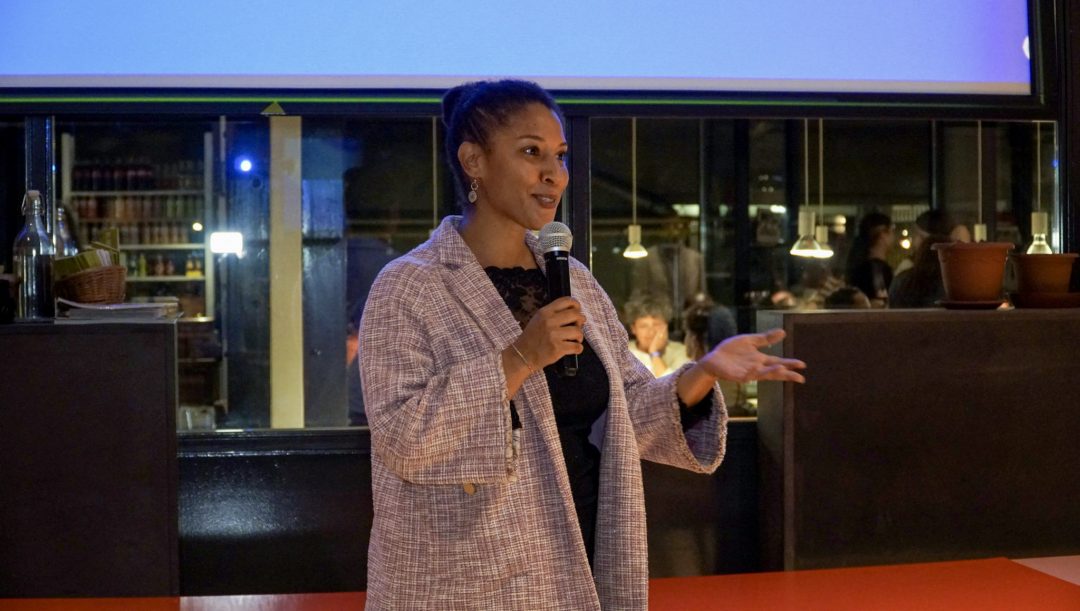We’ve all known it for years, “business as usual” is dead. So why aren’t “business schools as usual” dead too?
Five years ago, I got my Master in International Business and, freshly graduated, set out to start a company. I received a huge slap in the face when I realized two things:
I didn’t learn anything about building a business in business school.
I knew how to act like I knew things, but really, I didn’t know much.
After 5 years of long and expensive studies, it was a hard pill to swallow. So I did what most entrepreneurs do: I learned by doing. And boy did I learn! In just the first few months, I probably had 1,000 times more “a-ha” moments than during all of my years of secondary studies.
It was a great time of personal growth, but I still had this bitter taste in my mouth that there was so much more I could have learned earlier on. So when I was presented with the opportunity to teach entrepreneurship myself to Master’s students at business schools in parallel to running Bridge for Billions, I took it as a personal challenge. I set out to work on the pain points I had suffered through as a student, and bring a bit of fresh air to the classroom.
I had the incredible luck to work alongside a Chair Director who pretty much gave me a free pass, as long as students would learn about ‘real-life’ entrepreneurship, and be empowered to run their ventures. So I took the liberty to try out new things and to innovate in the classroom. I started by reflecting on my own experience at a business school. What did I wish I had learned there? I also gathered feedback from hundreds of students about what they wanted to learn.
I realized that in essence, business schools were failing to teach us the skills needed to navigate the 21st Century:
How to think
How to communicate
How to collaborate
How to test
And how to find meaning
# How to Think
One of the biggest shortcomings of business schools today is that they don’t teach you how to think for yourself, how to think critically. Every day engineers are being taught how to think about projects. Designers and architects too. Business school students are not.
Think like an engineer
In the early days of Bridge for Billions, the 3 other people working alongside me were all engineers. And it was pretty shocking to realize how differently our brains worked. Before, my brain would pretty much visualize the destination and immediately start building the “one and only road” to reach it.
They taught me to focus first on the objective, not the journey; the problem, not the solution; the why, not the how. How many hours did I lose to my old thinking process?! Damn, I didn’t even understand what a “problem” was.
Any destination can be reached by an almost infinite number of roads. When the destination is clear, an array of potential roads start to appear.
Working alongside engineers, I learned that any destination can be reached by an almost infinite number of roads and that when the destination is clear, an array of potential roads start to appear. I learned to see the bigger picture before burying myself in planning mode.
I completely attribute this huge shortcoming to business school thinking, a “powerpoint” culture that values the format over the substance. A culture where we can look good by just being present. I deeply believe that any successful business person thinks like an engineer, whether they realize it or not.
Business schools should train their students to be problem-centric and outcome-oriented thinkers. How? Through simple activities like creative problem solving, the 5 Why’s, etc. Another way that some pioneering business schools are already embracing this is to foster more collaborations and cross-pollination with engineering students.
Think like a designer
Another shocking realization was how much I was blocking almost half of my thoughts and opinions. I had somehow internalized that there were two categories of ideas: “good” ones that were worth mentioning out loud; and “bad” ones that I should keep to myself.
You see, if I ever said a “bad” idea out loud, I would risk being mocked, being perceived as “the stupid one”, not being smart enough. So I was constantly filtering myself and only finding watered-down solutions.
While this “fear of being wrong” stems from a bigger systemic problem that is extremely ingrained in Western European education (being French myself, I know what I’m talking about), it’s totally being fed by business schools, where the dominant thinking process is that we should be confident, we should be right all the time, and oh – never say something that sounds even slightly unconventional. Self-sabotaging your thoughts is the ultimate anti-entrepreneurial attitude.
My mind was blown when I discovered the thinking processes that designers use, like divergent thinking, which taught me that the best ideas can come from the most eccentric ones. Design thinking is a big buzz word nowadays, but it’s as simple as generating a large quantity of ideas regardless of their quality (the divergent phase) and then narrowing down the choice to the best ones (the convergent phase).
I wish business school would have taught me to question the status quo. To not be afraid to say something “stupid”. To think differently (Apple knew it all along, why didn’t I pay attention to their tagline?).
I’m glad to see “early-adopter” business schools teaching this now, but why hasn’t it become mainstream yet? It’s so easy to test in the classroom by simply introducing the principle of “no bad ideas” and setting unconventional constraints that spark creativity, i.e. “How would you solve this problem if you were a millionaire? And if you were your grandmother? If you had 1,000 volunteers working for you?”. You’d be surprised how quickly we can unstick ourselves by just stepping out of the conventional thinking path.
Discipline, discipline, discipline
The last flaw that I see in mainstream business school thinking is what I’d call the “winging it” culture. Maybe this will sound familiar to you.
Discipline is not sexy, but it’s the first factor for success. If you run a startup you know that already. Persistence is sometimes worth much more than the most innovative ideas or business models. Discipline is not being taught at business schools. Actually I would argue that most people “un-learn” the little discipline they got from their previous education path while in business school.
Now don’t get me wrong, you’ll need to have a hacker’s mentality when you start a business.You need to cut corners, optimize quickly, and do what nobody is doing. But hacking? winging it. Even having a hacker’s mentality requires discipline.
I’ve seen first-hand business school students living contently with “But I did my best”. Well, this is not enough, not even close. The results that an entrepreneur achieves is not a direct consequence of the efforts they put in, because the market doesn’t care that they did their best or not.
Starting a business requires consistent effort, and that’s probably the most underrated piece of advice entrepreneurs actually receive. Consistency beats talent every time. And those who have both go veeery far.
This one was harder to incorporate into my classes, but I tacked it by teaching entrepreneurship with our in-house Bridge for Billions methodology which has been inspired by Bill Aulet’s Disciplined Entrepreneurship framework.
Becoming an entrepreneur is really about covering and validating every critical aspect of starting a venture, from who your customers are, to what pricing strategy to apply, to how to create a 3-year financial plan. And that won’t happen on its own: you’ll have to get out there every day, be diligent about planning your actions, and bound back when faced with obstacles.
# How to Communicate
Did you have a “@schoolname.edu” email in business school? Those emails are the perfect illustration that business schools are stuck in the old world. They are a vestige of the pre-smartphone era and create huge inefficiencies in how we interact with one another. (Ever been cc’ed in an infinite chain of “reply to all”?)
Conciseness wins every time
If business schools were up to date with modern communication techniques, they would teach genuine & concise communication. But on the contrary, the tendency is to teach us to elaborate and embellish our points from thin air (over letters, anyone?).
When you receive a 10-paragraph email from a stranger, are you excited to read it? No, right? Synthesis is the new politeness. Taking the time to trim a message and edit out everything that doesn’t matter tells the receiver that we respect their precious time in this over-soliciting world.
Conciseness is also about authenticity. What do you really want to say? Are you offering help, asking for a favor, delegating work? Whether it’s for collaborating with groups, asking questions to a professor, contacting companies to get an internship, or anything else, in the real world quick & precise communication coming from a genuine place is key. As an entrepreneur, this skill is invaluable to making connections, resonating with clients, and efficiently managing a team.
The power of stories
So… I have a confession to make. In the first year of running my business, I did the craziest things to try to get clients. From directly emailing people whose emails I had scraped, to messaging strangers in startup groups on Facebook. In my defense, this was a pre-GDPR world. The point is: after 5 years of business school, I didn’t know a thing about marketing.
Can you guess why? Bingo! I was taught Philip Kotler’s Mix Marketing Theory. Yup. The dot-com bubble was 25 years ago and most consumers carry a mini-computer in their pockets, but business schools still teach marketing theory from the 60s.
I wish I was taught about virality, about growth hacking, about branding, about storytelling. I wish I knew better than to go to potential customers and tell them “I made something! Want it?” But the truth is that business schools today are struggling to do their own marketing, so how could they teach you how to do yours?
Yes, they train people to be part of a marketing department and collectively sell yogurt or shampoo bottles, but the whole strategic aspect of what a brand is, what your story is, or how to inspire, educate, spark action, is being completely overlooked. Business schools are not preparing their students to do their own strategic marketing.
# How to Collaborate
Now we’re getting to the core of the problem. Most business schools would argue that if there’s one thing they’re teaching well, it’s collaboration. After all, the majority of the curriculum consists of forming groups to collectively work on projects.
But here’s the thing: group projects at business schools reproduce the natural abilities of each team members instead of helping each of them grow where they need it the most. In a group of four, the role repartition is typically the following:
One leader who sets the general direction
One delegator who assigns tasks to everyone and keeps the best piece of the pie to themselves
One executor who does what they’re told without asking questions
And one person who goes MIA until D-day and reads their slide in a soporific tone.
*or one person who takes all three of the active roles, and three people who go missing.
Sound familiar?
Emotional intelligence is just as important as knowledge…
…if not more. Anyone who aspires to be in a leadership role will have to consider the emotional element of working in teams. It’s what helps you successfully coach people, manage stress, deliver feedback, and collaborate with others.
I wish business schools taught students about emotional intelligence for collaboration, personality types, and capitalizing on strengths. Being able to pinpoint how we feel, having empathy for others, seeing them as human, and considering their reality when managing a project… this is a real entrepreneurial skill. Vulnerability is still perceived as a weakness in the business world when it’s really a strength.
Vulnerability is still perceived as a weakness in the business world when it’s really a strength. When you show vulnerability, you create a trust, you move away from the almighty-leader, “hero-preneur” paradigm. And this trust and wholeness are what create strong teams, allowing them to sail through the toughest storms together.
Concretely, in the classroom, I encourage business students to be self-aware of their personality type and the strengths they might have as entrepreneurs, using self-assessment tools such as Skillon or the Myers-Briggs test.
You can be your own kind of leader
Another lesson I had to internalize through trial and error, after months and months of suffering through impostor’s syndrome, is that leadership is not one-size-fits-all.
Management has evolved so much in recent years, with fascinating models emerging such as Teal management, Holacracy, Sociocracy, the U Theory… Yet business schools still feed you with business cases where you are at the top of an organization chart and need to choose between firing half of your workforce or risking bankruptcy. These models engender an unhealthy “natural selection” in which you’ll immediately push aside the idea of growing into a leader just because you don’t fit the mainstream image of what a leader should be.
Business schools should empower their students to believe that they can all grow into their own leadership style. They should teach them that there’s no one way of coordinating a team and achieving incredible results. That team management doesn’t have to be political. That self-management can lead to spectacular business results. That culture eats strategy for lunch, to pick up on Curt Coffman and Kathie Sorensen’s famous sentence.
On that topic, I’m trying hard to lead by example by being my most authentic self with students, and telling them behind-the-curtains stories of teamwork at a small startup, so that they can see there are other ways of leading and interacting with one another.
# How to Test
In business school, were you ever encouraged to go out and talk to real people about their pains and the solutions you thought might work? Yeah, me neither. The biggest issue with current methods of teaching entrepreneurship in the classroom is that it’s totally stuck on the theoretical level.
Nobody wants to write a 20-page plain text business plan with a few excel-style charts, let alone read it. “Tell me and I forget. Teach me and I remember. Involve me and I learn”, said Benjamin Franklin. This has never been more true than for entrepreneurship.
What students need is practical, bold, real-life experience of what it means to talk to potential customers, to survey hundreds of them, to host focus groups, to build a prototype, to close their first sale, etc. Only by doing all of that can they feel the thrill and passion of going from zero to one and confront their beliefs with reality.
In between classes, I always give my students an assignment to go out there and test the market. If you’re ingenious, there’s always something you can do that’ll help test the concept. Whether it’s calling a competitor pretending to be a client to ask a few questions, building a landing page to test how many people leave an email, or navigating Facebook groups and posting surveys to learn from your future users.
They’re not happy about it initially, it’s uncomfortable to “bother” people and there’s also a deeper fear of discovering that nobody would use your great solution. But they come back to the next class with a renewed energy and much higher quality market insights.
# How to Find Meaning
Last but not least, I wish business school had taught me to dream, reflect on my purpose, and put into words what would get me out of bed every morning. I believe that if everyone was aligned with their deepest aspirations and values, then the world would be a much better place.
On that topic, I’m always inspired by my friend Maxime de Beauchesne who has made those topics of purpose and values his specialty. Since he’s also teaching at various business schools, we often speak about how we innovate in the classroom and have exchanged ideas and activities.
One activity I took from him and enjoy doing every semester during the first class is about inviting students to look inwards to find what they want to do. They pair up with someone else, sit back to back, and each speak for 5 to 8 minutes about what they would do if they could dedicate their life to anything.
Dreaming is so important to start any project, yet so underrated in our system that values production above everything else. I invite them to learn more about Dragon Dreaming, a methodology that I always introduce, so they can reconnect with dreaming and celebrating, and not only planning and doing.
What would the world look like if every business student had the chance to dream their perfect life, as well as the mindset tools to make that dream happen?
This is an invitation to every business school out there to embrace the 2Ist Century and become entrepreneurship schools. You can do better – by teaching students how to think, how to communicate, how to collaborate, and how to find meaning. There are plenty of tools and methodologies available to start this transition, whether it’s about offering a learn by doing entrepreneurship program to your students or inviting more dreams into the classroom.




